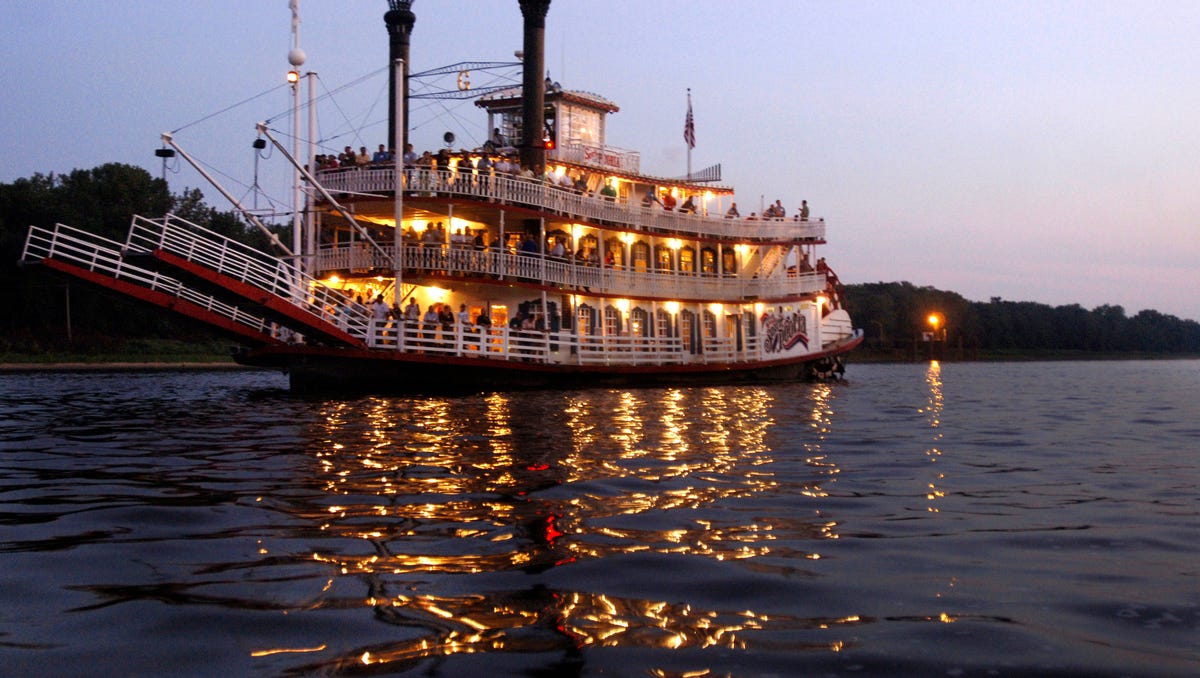Bethenny Frankel Says Daughter Bryn Cried and Begged to Move to Florida
Connecticut
A CT woman suddenly felt deathly ill. She hadn’t ‘heard of sepsis,’ which killed 574 people here in ’21

Erika Collins of Greenwich is an athlete, always fit and healthy.
But sepsis, a disease Collins had never heard of, could have killed her.
Finally, surgery on her shoulder, where sepsis had entered her bone, saved Collins’ life.
Courtesy of Erika Collins
Erika Collins
Sepsis, which occurs when an infection triggers an extreme immune response, can lead to tissue damage, organ failure and death, according to the Sepsis Alliance. Also known as septic shock or septicemia, it kills 350,000 in the United States each year.
It is especially dangerous to young children, older adults and those with weakened immune systems. People of color and low-income individuals are disproportionately affected, according to the alliance.
In 2021, sepsis killed 574 people in Connecticut, according to the Centers for Disease Control and Prevention.
Collins, 56, a lawyer, first felt sick on a business trip to Atlanta nine years ago. “On the plane I had the chills, did not feel well, got to the hotel room, definitely had a fever and that started off a week of on-again, off-again flu-like symptoms,” she said. “And I didn’t go to the doctor because there’s nothing to do for the flu.”
When she got home, Collins found she had a 105-degree fever. “I remember on Easter Sunday, we went to church and then we went to brunch, and at brunch my knees started knocking under the table. And this is a week after my first symptom.”

Sepsis Alliance
Thomas Heymann, CEO of the Sepsis Alliance
A rower and marathoner, Collins felt short of breath when she stood up, “something I’ve never experienced,” she said. Her doctor sent her to Greenwich Hospital’s Emergency Department. “By this point I can’t move my left arm for some reason.”
At the end of the day, a doctor initially told Collins her X-rays showed she had pneumonia, which Collins said she knew couldn’t be the case. She said she was discharged from the ED with a prescription for antibiotics and told to have an MRI done on her shoulder.
However, someone also ran blood cultures on Collins. “If that had not happened I would be dead…,” she said.
The next day, after she spiked another 105-degree fever, Greenwich Hospital called, “telling me all four of my blood cultures had tested positive for Group B strep in the bloodstream and I needed to be admitted to the ICU. Did I want them to send an ambulance?” Collins said.
She declined the ambulance, and had her car service drive her to the hospital. “That was one of the dumbest things I did because, by the time I got to the hospital, I was crashing,” she said.
The strep “was rampant in my bloodstream, and my immune system had freaked out, basically,” Collins said. “And they wound up having to do emergency shoulder surgery because … the infection had lodged in the bone. And so they had to do that the next day.”
She said no one could determine how she contracted sepsis. “I had never even heard of sepsis. I didn’t know what it was. Very, very scary,” she said.

Hartford HealthCare
Dr. Ulysses Wu, chief epidemiologist at Hartford HealthCare
Thomas Heymann, CEO of the Sepsis Alliance, said a number of factors have come together to make sepsis an increasing problem. “One, we’re having more infections with pandemics like COVID, which is a viral infection. So bacterial, viral, parasitic or fungal infections can lead to sepsis, which is your body’s dysregulated response to an infection,” he said.
“We have more people living with immune-suppressed conditions, as cancer patients are living longer, etc.,” he said. “We’re living longer generally. Older folks are more susceptible to infections leading to sepsis because our immune systems are less robust.”
While it is known what sepsis is, it’s not clear why the body’s immune system goes awry, Heymann said. “There’s still a lot of need for a lot more research,” he said. “We know how to prevent and treat sepsis, but we don’t really fully understand why the body has that inflammatory response to the infection.”
Heymann said any infection can lead to sepsis, although most do not. He cited one case of a boy who scratched a mosquito bite so much that it bled and became infected, leading to sepsis.

Yale New Haven Hospital
Dr. Scott Roberts of Yale New Haven Hospital
Sepsis that is acquired in the hospital is also a concern, he said.
“Health care-acquired infections are unfortunately on the rise,” he said. “A lot of that has been attributed to COVID and strains on the health care systems that led to just things being rushed, workforce reductions, things like that. So, health care-acquired infections are very common and … a real point of concern within hospitals.”
The Sepsis Alliance’s founder, Dr. Carl Flatley, launched the organization after his daughter died of hospital-acquired sepsis after a routine surgery, Heymann said.
“Health care-acquired infections and those that lead to sepsis are among the most dangerous because you have someone who’s already in the hospital for surgery or some other event and they get sepsis on top of that,” Heymann said. “So it’s doubly concerning and a lot of our work is focused on reducing health care-acquired infections.”
The Sepsis Alliance uses the phrase “It’s about TIME” to remind people what to watch for: Temperature, Infection, Mental decline and Extremely ill.
Dr. Ulysses Wu, chief epidemiologist and system director for infectious diseases at Hartford HealthCare, said sepsis is “one of our core measures that we look at, that we want to reduce morbidity and mortality. … We do take it very seriously because there are government measures that we have to meet in terms of diagnosing sepsis, giving antibiotics, giving fluids, drawing the right labs in the right amount of time.”
He said when patients have sepsis “there’s even more sense of urgency because we’ve learned that the sooner we can intervene with our lifesaving measures, the better that they will do.”

Courtesy of UConn Health
Registered nurses Elizabeth Haskell, left, and Ashley Johnson began a sepsis-reduction effort at UConn Health in 2020.
While hospital-acquired sepsis is a concern, Wu said, “I’d like to say proudly at Hartford HealthCare that we try to minimize and we have been recognized for decreasing what we call hospital-related infections. We’re some of the best in the state.”
Dr. Scott Roberts, associate medical director of infection prevention for the Yale School of Medicine, said it’s important to begin treatment with antibiotics as soon as possible.
“There’s actually studies that show hour-by-hour delays lead to increasing odds of a bad outcome, increased morbidity, increased mortality,” he said.
“It’s important to note that it’s still quite rare in general and most infections do not progress to sepsis,” Roberts said. “I think the key is people having fevers and they just have a general unwell feeling, that they should get evaluated sooner rather than later.”
He said the greater susceptibility to sepsis among people of color “”possibly reflects the disparities in health access and in terms of getting plugged in with the health system. Certainly we’re seeing that at a local level, where we see in general a lot of disparities in medical care with Black patients compared to white patients.”
Roberts said he looked at infections associated with central lines — a catheter placed in the neck through which medications and fluids are given — which showed “Black patients have a higher rate of these infections compared to white patients in spite of presumably they should be receiving the same care,” he said.
At UConn Health, registered nurses Elizabeth Haskell and Ashley Johnson began an effort in 2020 to focus on reducing sepsis at John Dempsey Hospital.
“Our goal has been to improve sepsis care in our hospitals, so that we meet a metric set by (the Centers for Medicare and Medicaid Services) for sepsis care,” Haskell said.
“It’s like cross-comparing how your care is to other institutions, and therefore it’s just become public knowledge, and the goal is to make the public aware that you’re taking good care of patients because it is such a detrimental illness to have if you don’t get treatment quickly,” she said.
“We’re trying to make sure a patient is getting an antibiotic, that they are getting blood cultures drawn, that they are getting lab worked on and that we are assessing their vital signs,” Johnson said. “Measuring their heart rate, their blood pressure, their temperature, and their number of respirations and that combined with everything else, is how we monitor and make sure we’re getting the appropriate care.”
Haskell said UConn Health meets or exceeds its goal 80% of the time, compared with a national average of 50%.
She said people with an infection should be concerned about sepsis if they are mentally confused, more sleepy than normal or feel extremely ill or in severe pain.
“Something seems not right sometimes is what people will tell you,” she said. Other symptoms include rapid heart rate or shallow breathing.
“Anybody who seems ill and has those types of symptoms, those are symptoms that somebody should come and get evaluated for,” Haskell said. “If they’re ill, they might be progressing to sepsis.”
Ed Stannard can be reached at estannard@courant.com.

Continue Reading
Connecticut
Inside Bethenny Frankel’s $7.8M Sale of Applejack Farm in Connecticut

Bethenny Frankel has sold her Connecticut home, also known as Applejack Farm, for more than $7.8 million.
The estate, which is located in Greenwich, Connecticut, closed for $7,825,000. The sale was represented by Jeff Jackson, a broker and owner of Corcoran Centric Realty. Martha Z. Jeffrey and Anne Z. Ogilvy of Sotheby’s International Realty represented the buyer.
Applejack Farm is located in a gated area of the Golden Triangle neighborhood, just minutes outside of Greenwich. Frankel, 54, originally purchased Applejack Farm for $4,250,000 in 2021.
The home was first built in 1743 and is considered to be one of the oldest homes in Greenwich. Over the years, the Real Housewives of New York City alum renovated and added on to the property, ultimately increasing its value.
The property boasts five bedrooms, six bathrooms, two half bathrooms, grand historic rooms, a La Cornue-equipped kitchen, a primary suite with dual spa-grade bathrooms, a lower level with a media room, entertainer’s bar, gym and more. The estate also features a guest cottage that includes two bedrooms, two and half bathrooms, a three-bay garage, a standalone studio and a party barn.
Across its buildings, Applejack Farm has numerous architectural details, including beamed ceilings, brick fireplaces, paneled walls, ornate moldings, an antique bar and more.
The grounds of Applejack Farm included a wide array of trees and rolling green lawns. The plush landscape is accentuated with intricate lighting, a luxe stone patio, a storage shed and a covered porch overlooking the stunning view.
Back in April, Frankel announced that she was migrating south to the Sunshine State.
“I am moving to Florida for personal and professional reasons,” she explained in an Instagram video. “Something has arisen that made this the best and healthiest for myself and my daughter.”
That same month, she quietly placed her Connecticut home up for sale for $8 million.
Before making her relocation official, Frankel reportedly purchased a condo in Miami, which serves as her secondary Florida home. She bought the property for about $1.7 million in June 2024.
After settling in, Frankel gave fans an inside look to her home and new life in the Sunshine State.
“The transition and journey has been rough but in a few weeks we will be settled into our Florida home before we head to the Hamptons for an endless summer,” she wrote via Instagram in May alongside moments of her time in Miami so far. “Let the adventure era continue.”
Connecticut
Rare ‘Mushroom House’ hits CT real estate market for $1.5M. See Zillow Gone Wild tour

Watch what happened as The Broken Crust is featured on ABR Roadshow
America’s Best Restaurants Roadshow stopped in Putnam to feature The Broken Crust. Take a look at what happened while they were there.
- The home, called “Starcastle” but known to locals as “The Mushroom House,” has a bumpy, white outside with mushroom-like domes on several parts of the house.
- It is on sale for $1,500,000.
- Instagram users loved the view, but not the mushroomy look.
A Connecticut home for sale was featured on the social media account Zillow Gone Wild in June for its unique, mushroom-like appearance.
The home, called “Starcastle” but known to locals as “The Mushroom House,” has a bumpy, white outside with mushroom-like domes covering several sections of the house.
Now, you can buy this ‘trippy’ home for $1,500,000.
Why is it called the Mushroom House?
The home was designed by architect Roy Mason in 1985 for Ed Roman, the owner of Las Vegas’ Ed Roman Guitars and Danbury’s Eastcoast Music Mall, according to Zillow Gone Wild.
Rather than being a square or rectangle shape like many houses, the Mushroom House is rounded and lumpy, as if covered by bubbling white cement.
One particularly prominent column looks especially like a mushroom, but mushroom-cap-like domes cover several different sections of the house.
The listing, held by Lisa Weisenberger of Luks Reality, says that this is a “a once-in-a-generation opportunity to own one of Connecticut’s most iconic homes.”
“A home this rare doesn’t just make memories—it builds them,” it adds.
How many bedrooms and bathrooms does it have? Other features?
The 5,036 square foot Mushroom House has four bedrooms and five bathrooms.
Zillow Gone Wild points out special features like a sunken conversation pit, an open concept living room with a “landing/DJ area/chill zone” above and wide windows in many of the rooms that allow those inside to take in the panoramic vistas.
Outside, there’s a pool, a gazebo and a large smiley face.
In addition to a private home, the listing says the property has potential to be an Airbnb, a wedding venue or an “unforgettable weekend escape.”
Where is the Zillow Gone Wild CT mushroom house?
The Mushroom House can be found at 155 Shortwoods Rd. in New Fairfield, Connecticut.
It is located between two state parks, Squantz Pond State Park and Pootatuck State Forest, giving it expansive views. It overlooks Squantz Pond and Candlewood Lake in addition to the protected parklands.
It has 23.5 acres of private land, with woods, sculpted gardens and a pool.
The home is 71 miles from New York City.
“This property feels like its own private kingdom—yet remains just a short, scenic drive from NYC,” says the listing.
Instagram users ask, is the view worth the house’s ugliness?
Instagram users loved the view, but not the mushroom-y look. Some compared it to ant hill, while others referred to it as “Tatooine.”
“I’m trying to decide if the view is worth living in that monstrosity,” said Ashley Govea, or user @mrsgovea10. “The fact that I’m confused speaks volumes to how good that view is.”
“The best thing about this house is the view,” said Judy, @btwimjudy.
“I really love weird houses but I couldn’t live in that,” said Judy Kepes, @judykepes.
Connecticut
Vehicle crashes into police car in Wethersfield during investigation: police

A vehicle crashed into a police car in Wethersfield during an investigation over the weekend, according to police.
Officers responded to Cumberland Farms on the Berlin Turnpike around 1:30 a.m. to help investigate a vehicle that was wanted by Hartford Police Department for not being returned to its owner.
Police said the Nissan Kicks was seen by Newington police officers parked in the Cumberland Farms parking lot and was called into Wethersfield police.
As officers approached the vehicle, investigators said the driver put the vehicle in drive and drove out of the parking spot.
According to police, the Nissan Kicks hit the front of a Wethersfield police cruiser while leaving.
At the time of the collision, the police cruiser was not occupied. No injuries were reported.
The investigation is ongoing.
-

 West4 days ago
West4 days agoBattle over Space Command HQ location heats up as lawmakers press new Air Force secretary
-

 Alaska1 week ago
Alaska1 week agoInterior Plans to Rescind Drilling Ban in Alaska’s National Petroleum Reserve
-

 Education1 week ago
Education1 week agoVideo: Inside Trump’s Attack on Harvard
-

 Technology1 week ago
Technology1 week agoMicrosoft will finally stop bugging Windows users about Edge — but only in Europe
-

 Politics1 week ago
Politics1 week agoCalifornia beach ‘Resist!’ protest pushes ‘kindness’ while calling to ‘86 47’ in anti-Trump message
-

 Politics1 week ago
Politics1 week agoRed state tops annual Heritage Foundation scorecard for strongest election integrity: 'Hard to cheat'
-

 World1 week ago
World1 week agoSouth Korea’s presidential election aims to restore democratic credentials
-

 World1 week ago
World1 week agoTwo suspected Ugandan rebels killed in Kampala explosion

















